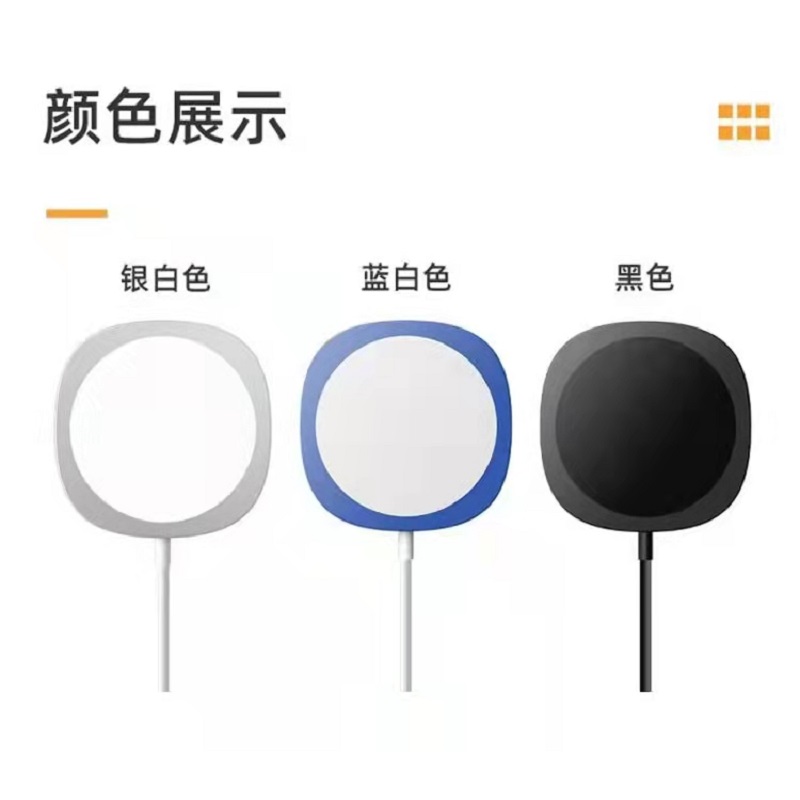News
- Home >> News >> Industry news
Wireless charging technology I
2021-06-28 09:46:09
Wireless charging technology; Wireless charge technology, originated from wireless power transmission technology, can be divided into two ways: low-power wireless charging and high-power wireless charging.
Low power wireless charging usually adopts electromagnetic induction, such as Qi mode for mobile phone charging, but ZTE's electric vehicle wireless charging adopts induction mode. High power wireless charging usually adopts resonance mode (most electric vehicles charge in this way). The power supply equipment (charger) transmits energy to the device using electricity, which uses the received energy to charge the battery, And at the same time for its own operation.
Because the energy is transmitted by magnetic field between the charger and the electric device, and there is no wire connection between them, the charger and the electric device can achieve no conductive contact exposure.

On June 7, 2007, the research team of MIT published the research results on the website of science. The research team applied resonance to the transmission of electromagnetic waves and successfully "grasped" the electromagnetic waves. Using copper coils as electromagnetic resonators, one coil was attached to the power transmitting side, and the other coil was attached to the power receiving side. After the transmitter sends out a certain frequency of electromagnetic wave, the electromagnetic field diffuses to the receiver, and the power is transmitted wirelessly. The technology, which they call "wireless power", has been successfully tested to power a 60 watt bulb two meters away. The maximum transmission distance of this technology can only reach 2.7 meters, but the researchers believe that the power supply can charge the battery within this range. And only need to install a power supply, you can supply power for the whole room.
Low power wireless charging usually adopts electromagnetic induction, such as Qi mode for mobile phone charging, but ZTE's electric vehicle wireless charging adopts induction mode. High power wireless charging usually adopts resonance mode (most electric vehicles charge in this way). The power supply equipment (charger) transmits energy to the device using electricity, which uses the received energy to charge the battery, And at the same time for its own operation.
Because the energy is transmitted by magnetic field between the charger and the electric device, and there is no wire connection between them, the charger and the electric device can achieve no conductive contact exposure.

Historical development
In 1890, Nikola Tesla, a physicist and electrical engineer, had already done wireless transmission experiments. The international system of units for magnetic induction is also named after him. Tesla's wireless power transmission method is to use the earth as the inner conductor and the earth's ionosphere as the outer conductor. By amplifying the transmitter and using the radial electromagnetic wave oscillation mode, a low frequency resonance of about 8Hz is established between the earth and the ionosphere, and then the surface electromagnetic wave around the earth is used to transmit energy. However, due to lack of financial resources, Tesla's bold idea has not been realized. Although later generations have fully confirmed the feasibility of this scheme in theory, the world has not yet achieved great harmony, and it is impossible to broadcast and obtain energy for free in the world. Therefore, a great scientific idea was born and died.
On June 7, 2007, the research team of MIT published the research results on the website of science. The research team applied resonance to the transmission of electromagnetic waves and successfully "grasped" the electromagnetic waves. Using copper coils as electromagnetic resonators, one coil was attached to the power transmitting side, and the other coil was attached to the power receiving side. After the transmitter sends out a certain frequency of electromagnetic wave, the electromagnetic field diffuses to the receiver, and the power is transmitted wirelessly. The technology, which they call "wireless power", has been successfully tested to power a 60 watt bulb two meters away. The maximum transmission distance of this technology can only reach 2.7 meters, but the researchers believe that the power supply can charge the battery within this range. And only need to install a power supply, you can supply power for the whole room.
In February 2014, the computer manufacturer Dell joined the a4wp camp. At that time, the relevant senior management of the camp said that they would upgrade the technology and support Dell and other computer manufacturers' ultrabooks for wireless charging. Most of the traditional laptops on the market have a power supply of more than 50 watts. However, ultrabook uses Intel's low-power processor and will become the first laptops to use wireless charging. Before that, wireless charging technology has been only related to "small" mobile devices such as smart phones and small-size tablets. However, a4wp (wireless charging alliance), one of the three camps of wireless charging, recently announced that its technical standard has been upgraded, and the supported charging power has been increased to 50 watts, which means that high-power devices such as laptops and tablets can also realize wireless charging.
In October 2017, the mobile phone family that supports wireless charging has ushered in three new members: iPhone 8, iPhone 8 plus and iPhone X - they all support Qi wireless charging standard, aiming to bring more convenience to users and make the mobile phone look cooler.

